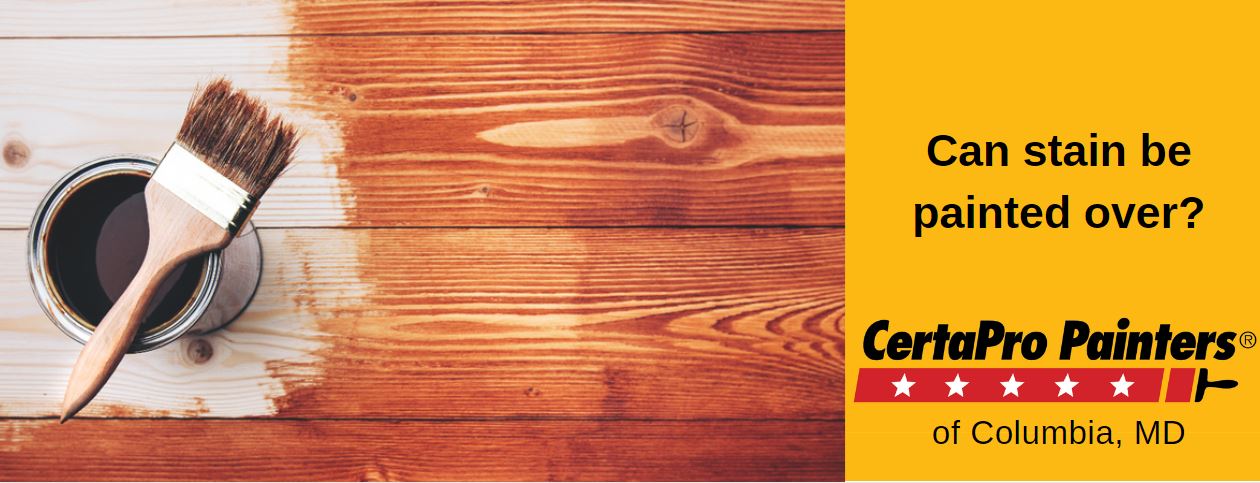
Can stain be painted over?
Posted on June 2, 2021
 When it comes to paint or stain, it used to be one or the other, and never the two shall meet. Realtors, painters and industry experts used to tout that once wood was stained, you could not switch to paint. We have come a long way since then. Are you going from stain to paint? Can you do it? In short, yes! And here’s here.
When it comes to paint or stain, it used to be one or the other, and never the two shall meet. Realtors, painters and industry experts used to tout that once wood was stained, you could not switch to paint. We have come a long way since then. Are you going from stain to paint? Can you do it? In short, yes! And here’s here.
The advice to not paint over stained wood came with good reason. Because stains bleed into the wood, paint won’t adhere to it. Manufacturers have heard your plight and created a specialized paint primer that seals off the bleed and allows your paint to adhere to the stained wood. Here’s more details.
Walls
Walls are apt to be exposed to a different kind of stain: water. Water stains on drywall have a magical way of disappearing and reappearing no matter how many coats of paint you use. With the right kind of primer, you’ll be able to lay down a coat of it with a couple of layers of paint and seal it off for good. Big box retailers and specialty stores will be able to assist in the primer selection to accomplish this.
Wood
You can paint over stained wood if you follow our steps to the letter. First you’ll need to prepare the whole area of painting including filling holes and sanding the gloss off of the wood. Using a stain blocking primer, lay an even coat down on the sanded surfaces. Keep in mind if you are working on cabinets there may be sides or edges you need to cover as well. Give the primer sufficient time to dry. Begin painting. It may take several coats, but the paint will adhere to the primer and give you a clean looking painted wood when you are finished.
Deglossers
One of the most dangerous chemicals you can bring into your home is a deglosser. Chemical gloves and respirators are absolute necessities. Protect your skin, face, hands and flooring with protective wear that will not succumb to the chemicals in the deglosser. Follow all instructions on your deglosser and be careful with it. It evaporates fast, causes messes and will destroy surrounding items if it comes in contact with them.
Stain Killing Primer
No matter the color change from the stain to the paint, you will have to prime your cabinets. Stains will show through paint, even if it’s a dark color. Get a quality stain blocking primer and prepare to potentially put two coats down if your stain is particularly dark. Do not spot treat. Your primer and paint will show brush strokes and coats, so cover everything evenly.
Caulk
Spend some time caulking – yes, after primer, it will bond better. Seal the cracks between joints and pieces of wood where there are showing imperfections. Wipe down extra caulk with a wet rag and allow everything time to dry before moving on. Dry wipe down any dust that is lingering from the sanding process.
Paint
Here we are, painting over stain. Apply as many coats as necessary to cover the stain fully. Oil paints are recommended to avoid brush strokes but they are smelly and hard to work with.
Not interested in the steps yourself? Contact our estimators to get a free in-home estimate from our experts.





